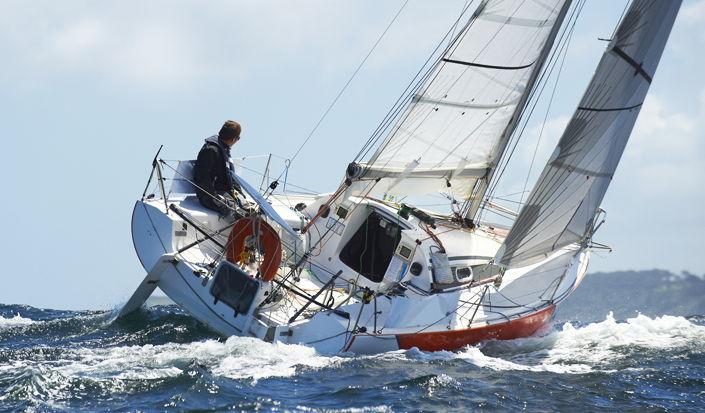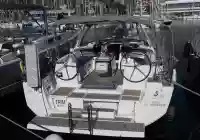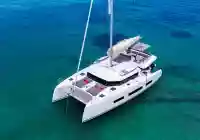Knowing the right sailing terms to use on board a boat is crucial in communicating while you’re sailing and nobody should take to the water without knowing the basics. Terms used by sailors for hundreds of years are still used today. They are scattered throughout the English language, some dating back to the16th and 17th century. Here you will find the some basic nautical terms that every sailor should know as well as some fun sayings that have crept into everyday language, but have their origin in the great sailing tradition.
Parts of the boat and useful terms
1. Aft or Stern - The back part of a ship.
2. Bow - The front of the ship is called the bow.
3. Port - Port is always the left-hand side of the boat when you are facing the bow.
4. Starboard - Starboard is always the right-hand side of the boat when you are facing the bow.
5. Deck - the top of the boat which covers the hull.
6. Boom - The boom is the horizontal pole extending from the bottom of the mast. Adjusting the boom towards the direction of the wind is how the sailboat is able to harness wind power in order to move forward or backwards.
7. Rudder – a flat piece of wood, fiberglass or metal located beneath the boat, the rudder is used to steer the ship. Bigger sailboats control the rudder via a wheel, while smaller sailboats have a steering mechanism directly aft.
8. Mainsail – the sail aft of the mast attached to the mast and the boom
9. Headsail/Jib – the sail between the forestay and the mast
10. Spinnaker – a large balloon like sail attached to the mast at the front of the boat . Used for sailing downwind.
11. Halyard – a line used to raise a sail
12. Sheet – a line used to adjust a sail
13. Winch – device used to tighten a line
14. Cleat – a device used to secure a line
15. Leeward - Also known as lee, leeward is the direction opposite to the way the wind is currently blowing (windward).
16. Windward - The direction in which the wind is currently blowing. Windward is the opposite of leeward (the opposite direction of the wind). Sailboats tend to move with the wind, making the windward direction an important sailing term to know.
17. Tacking – this is a basic sailing maneuver and refers to turning the bow of the boat through the wind so that the wind changes from one side of the boat to the other side. The boom of a boat will always move from one side to the other when performing a tack.
18. Jibing - The opposite of, and a less common technique than tacking, this basic sailing maneuver refers to turning the stern of the boat through the wind so that the wind changes from one side of the boat to the other side.
19. Ease – to let out the sails
20. Trim- to pull in the sails
Sailors’ Slang
Many words and expressions originate from our relationship with the sea. Commonly used words and phrases such as ‘overwhelm’ (from the Middle English word meaning "to capsize") and "Please stand by" (an expression derived from the command for sailors to be ready). By no means a comprehensive list, here are ten of the best:
1. Above board - meaning honest. Pirates would often hide much of the crew below the deck. The ships that showed their crew on the deck were thought to be honest merchant ships known as "above board".
2. All hands on deck – everyone help out. A term used to command all seamen to their stations and prepare for action.
3. Bale out - getting out of a situation. To bale out originally meant to remove water from a vessel.
4. Binge – immoderately indulgence. A nautical term for cleaning out something, such as a cask of rum. A sailor who had cleaned out such a rum cask was known to ‘have a binge’.
5. Carry on – to continue onward or go on with a task. In the days of sail, the officer of the deck kept a constant eye on the change in the wind so that the sails could be adjusted to ensure the fastest headway. Whenever a good breeze came along, the order to "carry on" would be given. It meant to hoist every bit of canvas the yards could carry.
6. Don't rock the boat - Keep things the way they are.
7. Dressed to the nines – dressing up in fancy clothing. To celebrate victories, a returning ship would approach her home waters or port "dressed" in bunting and flags. As many of the crew as possible would line up on the nine primary yards as a salute to their monarch.
8. Feeling under the weather -This refers to feeling ill or sick and came from the frequency of ship passengers becoming seasick in heavy weather.
9. Footloose and Footloose and Fancy-Free – acting without commitment. The word comes from the term for the bottom of the sail that is known as the foot of the sail which must be attached to the boom. If it is not properly attached it may become footloose causing the vessel not to sail properly.
10. Go with the flow – taking it easy or getting in step with surrounding events. An expression for sailing in the same direction as the current flow that makes the passage smoother and faster.
With these terms under your belt, you’ll be talking like a sailor in no time!
By Merryn Wainwright




